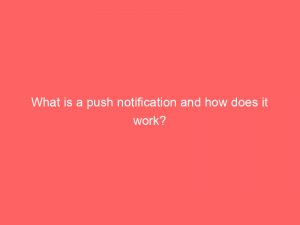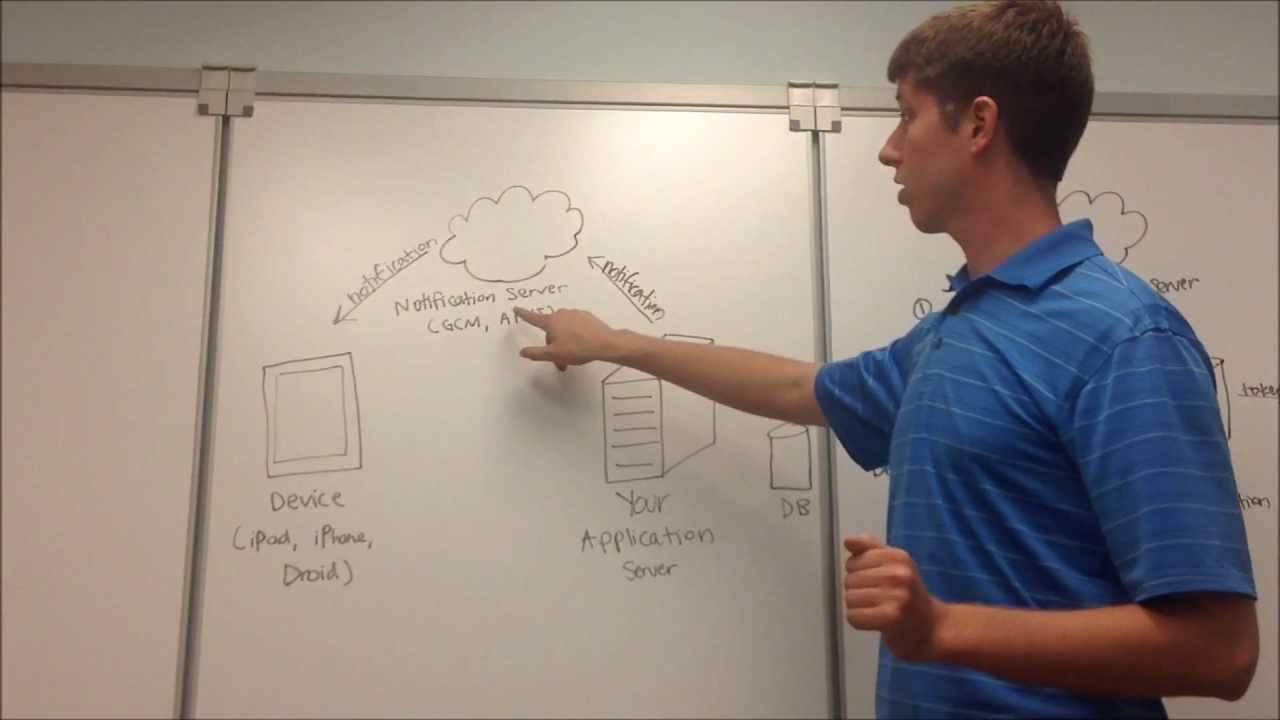In a world fueled by technology, staying connected is key. And what better way to stay informed than with push notifications?
These little messages, introduced in 2009 and 2010, have become an integral part of our digital lives. They allow us to receive updates and alerts from our favorite apps, even when they’re not running.
With the power to contain images, action buttons, and personalized content, pushnotifications have emerged as a valuable marketing tool. But they’re not without their challenges.
In this article, we’ll explore whatpushnotifications are, how they work, and why they’re so important for businesses. So buckle up and get ready to dive into the world of pushnotifications.
And don’t worry, we’ve got you covered with a simple solution: BuildFire, a push notification service that simplifies the process.
Table of Contents
- what is a push notification
- Introduction To Push Notifications
- Functionality And Features Of Push Notifications
- The Significance And Reach Of Push Notifications
- How Push Notifications Work
- Differences In Push Notifications Between iOS And Android
- The Benefits And Effectiveness Of Push Notifications For Marketing
- Best Practices For Push Notification Campaigns
- Potential Pitfalls And Considerations For Push Notifications
what is a push notification
A push notification is a message sent to a user’s mobile device from an app, even if the app is not actively running in the background. It was introduced in 2009 for iPhone developers and in 2010 for Android developers.
Push notifications can include images and action buttons, and billions of them are sent daily. To deliver push notifications, an app’s unique identifier is registered with the device’s push notification service.
Users need to opt-in for push notifications on iOS, while on Android, they are sent by default. They appear directly on the user’s home screen, increasing engagement and conversions.
A push notification service specific to each operating system is required for delivery, which allows app owners to track data and improve their push notification campaigns. Best practices include sending valuable and relevant content, segmenting users, and considering device and OS differences.
Effective campaigns prioritize user experience and avoid excessive messaging. Personalization and tracking key metrics are important for engagement and conversion rates.
However, inappropriate use of push notifications can harm brand reputation and result in user unsubscribes. BuildFire is a push notification service that simplifies the process and supports various types of notifications.
Key Points:
- A push notification is a message sent to a mobile device from an app, even if the app is not active.
- Push notifications can include images and action buttons and are sent in large quantities daily.
- Users on iOS need to opt-in for push notifications, while on Android, they are sent by default.
- Push notifications appear on the user’s home screen, increasing engagement and conversions.
- A push notification service specific to each operating system is required for delivery and tracking data.
- Effective push notification campaigns prioritize user experience, personalization, and tracking key metrics, while avoiding excessive messaging.
Sources
https://www.howtogeek.com/751954/what-are-push-notifications/
https://buildfire.com/what-is-a-push-notification/
https://www.ibm.com/topics/push-notifications
https://www.airship.com/resources/explainer/push-notifications-explained/
Check this out:
💡 Pro Tips:
1. Use personalized push notifications: Personalization is key to engaging users with push notifications. Address users by their names, tailor notifications to their specific interests and behaviors, and provide relevant and valuable content.
2. Segment your users for targeted campaigns: Instead of sending the same notification to all users, segment your audience based on characteristics such as demographics, behavior, or location. This allows for more effective and personalized messaging.
3. Optimize for different devices and operating systems: Different devices and operating systems may have different push notification capabilities and limitations. Make sure to consider these differences when crafting your notification content to ensure a consistent and optimal user experience.
4. Track and analyze data to improve performance: Utilize analytics tools to track important metrics like open rates, click-through rates, and conversion rates. Analyzing this data can help you understand user behavior and preferences, allowing you to optimize your push notification campaigns for better results.
5. Avoid overuse and spamming: Sending too many push notifications or irrelevant messages can annoy users and lead to unsubscribes. Prioritize quality over quantity and make sure your notifications provide real value to the user.
Introduction To Push Notifications
Push notifications have become an integral part of the modern mobile experience. They were first introduced in 2009 for iPhone developers and in 2010 for Android developers, revolutionizing the way users interact with mobile apps.
Push notifications allow users to receive updates, alerts, and important information from apps even when they are not actively running in the background. This feature has greatly enhanced the functionality and engagement of mobile apps, making them more interactive and informative for users.
Functionality And Features Of Push Notifications
Push notifications offer several key functionalities and features that make them a powerful communication tool. Firstly, they can contain images and action buttons, allowing app developers to provide rich and interactive content to users.
This capability enables users to take immediate actions such as replying to a message or opening a specific screen within the app directly from the notification itself. Additionally, billions of push notifications are sent daily, highlighting their widespread adoption and usage across various industries and applications.
The Significance And Reach Of Push Notifications
The significance of push notifications lies in their ability to reach users directly on their home screens. Unlike traditional methods of communication such as email or SMS, push notifications have the advantage of being instantly visible to users without the need to open an app.
This immediate visibility increases user engagement and can lead to higher conversion rates. Push notifications also have a broad reach, as they can be delivered to millions of users simultaneously without the need for individual user interactions.
How Push Notifications Work
To enable push notifications, an app’s unique identifier needs to be registered with the device’s push notification service. This registration allows the device to receive and display notifications from the app.
When an app sends a push notification, it is delivered to the device by the push notification service specific to the device’s operating system. The notification is then displayed on the user’s home screen, providing them with valuable information or an alert from the app.
Differences In Push Notifications Between iOS And Android
There are some key differences in how push notifications function between iOS and Android. On iOS, users are required to opt-in to receive push notifications for each app individually.
This ensures that users have control over the notifications they receive. On the other hand, push notifications on Android are sent by default, meaning that users will automatically receive notifications unless they explicitly opt-out.
This difference in default behavior should be taken into consideration when designing push notification campaigns for different operating systems.
The Benefits And Effectiveness Of Push Notifications For Marketing
Push notifications have proven to be a valuable marketing tool for mobile apps. They can significantly increase user engagement, retention, and conversion rates.
By appearing directly on the user’s home screen, push notifications have a higher visibility and prompt immediate attention. This makes them ideal for delivering time-sensitive offers, updates, and promotions.
Personalization and targeting are also crucial in push notification marketing, as sending relevant and timely content can greatly enhance user experience and increase conversion rates.
Best Practices For Push Notification Campaigns
To optimize the effectiveness of push notification campaigns, several best practices should be followed. Firstly, it is important to send valuable and relevant content to users, avoiding excessive or irrelevant messages that may lead to user dissatisfaction.
Segmenting users based on their preferences, behavior, or demographics can help tailor the content of push notifications for better engagement. Moreover, considering device and operating system differences is crucial to ensure the notifications are displayed correctly on all devices.
Tracking key metrics such as open rates, click-through rates, and conversion rates is also essential to analyze and improve the effectiveness of push notification campaigns.
Potential Pitfalls And Considerations For Push Notifications
While push notifications offer significant benefits, there are potential pitfalls that app owners should be aware of. Inappropriate or excessive use of push notifications can harm the brand reputation and lead to user unsubscribes.
Users can easily get annoyed if they receive too many notifications or notifications that are not relevant to them. Therefore, it is essential to strike a balance and prioritize user experience.
Being mindful of timing, frequency, and content can help maintain a positive relationship with users. Additionally, respecting user preferences and providing easy opt-out options is crucial to ensure a positive user experience.
In conclusion, push notifications have transformed the way users interact with mobile apps. Their ability to deliver timely and relevant information to users directly on their home screens has made them a powerful marketing and communication tool.
App owners and developers can optimize the effectiveness of push notification campaigns by following best practices, tracking key metrics, and prioritizing user experience. Push notifications, when used appropriately, can significantly increase engagement, conversions, and overall app success.












